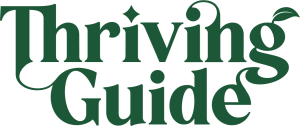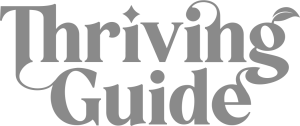
Our lives are made easier by modern advancements, yet many of us now lead more sedentary lifestyles. It is thought that moving less and sitting more is a major contributor to the obesity pandemic and is linked to a number of health issues.
The risk of cardiovascular disease, diabetes, and a variety of other obesity-related illnesses is significantly increased by inactivity and sitting for more than four hours each day, according to research published in 2010. This risk may even be greater than that associated with smoking.
Becoming more physically active requires some initial intentional effort, but it is worth it for the plethora of advantages it offers.
Here are 11 suggestions to get you moving, whether you work at a desk all day or are just finding it difficult to get motivated.
More Walking
The advantages of taking a daily 30-minute walk have been confirmed by a large body of research.
The Nurses’ Health Study discovered that individuals who engaged in moderate-intensity exercise for at least 30 minutes each day had a decreased risk of sudden cardiac mortality over the course of its 26-year follow-up.
According to a 2015 study, just three five-minute breaks from sitting during the course of the day can undo the damage that prolonged sitting has on the peripheral arteries in the legs.3
Even when you’re at work, increasing your walking is simple. Instead of having meetings at a conference table, advocate walking meetings. You can also experiment with extra exercise before or after work, like taking your dog for longer walks.
Find other occasions to go for a walk. For instance, if you live nearby, consider having your children walk to or from school, or at least to the bus stop. After supper, you might like to go for a family walk.
Even if your family’s schedule prevents dining together for supper, consider going for a walk around the neighborhood after everyone gets home. Along with getting some exercise, you’ll also get to bond as a group.
Go Up the Stairs
In a 2017 study, it was discovered that stair climbing, which is regarded as a vigorous-intensity exercise, burns more calories per minute than jogging.
You may develop and maintain strong bones, joints, and muscles as well as maintain a healthy weight by taking the stairs whenever you can.4
Traverse the parking area
Parking your car at the far end of the parking lot or further down the road from your destination is a simple approach to increasing your daily step count, provided you can do so securely.
Similar to choosing the stairs over the elevator when possible, if you have the time and the physical capacity to walk a little further, you’ll get the health benefits of more movement.
Also, taking a short break outside to appreciate the sunshine or the changing of the seasons by walking across the parking lot or around the block from your workplace might be beneficial for your mental health.
Give Up Your Automobile
The prevalence of overweight and obesity in the modern world is correlated with how we commute. Active modes, like walking or cycling, have significant health advantages and a larger ability to prevent obesity than more passive modes of transportation.
Even using public transportation to get to work seems to be related to a lower body mass index (BMI) than driving your own automobile. There are more steps involved in getting from your front door to your garage than in standing on a subway platform or going to the bus stop.
BMI is an outdated, unreliable metric. It disregards elements including age, race, sex, ethnicity, and physical composition.
BMI is still frequently employed in the medical industry despite being a biased assessment since it is a quick and affordable approach to assess a person’s probable health status and consequences.
You might be able to fit in those extra steps even if you do use your own car, though, if you have to park in a city lot or a few blocks from your home.
At the workplace
It may not be necessary to add activity to your workday if you have a physically demanding profession. But for individuals who spend their days seated at a computer, adding extra exercise might be a significant way of life adjustment.
Rise up
Make it a point to stand up at least every 20 minutes if your job needs you to sit down for extended periods of time. If you frequently become engrossed in a project and lose track of time, you may need to set a reminder on your phone or calendar.
You don’t necessarily have to finish what you’re doing in order to take a little standing or stretching break if you’re concerned about interrupting your production. Standing up makes it simple to answer calls or go to printed documents.
Instead of sending an email, consider taking brief pauses from your workstation to fetch some water or speak with a coworker at their desk.
Switch Workstations
Consider purchasing a standing desk, a treadmill desk, or a seat with a workout ball as well.
Even some of your everyday computer work can be done standing up if your workstation can be changed to different heights.
Standing workstations can be more ergonomically sound when set up properly and may even help with posture and back issues. Workplace ergonomics experts are employed by some firms, and they may assess your workstation and assist you in setting it up.
In the house
After a long day at work, resist the urge to rest and attempt to talk yourself into staying active after you get home.
Do Your Tasks
Instead of going from the couch to the table after supper, tidy your kitchen. It’s simple to overlook the fact that activities like cleaning the kitchen counters and doing the dishes count as standing activities during the day.
Even more strenuous activities include sweeping the floors, vacuuming, and bringing out the garbage.
An added benefit is that you’ll finish your cleaning during the week, freeing up your days off for more enjoyable pursuits.
Additional Activities Following Dinner
Arranging an activity after dinner improves your fitness, lowers your risk of developing insulin resistance, and keeps your blood sugar levels in the ideal range.
You don’t have to pass up the opportunity to get moving just because you’re eating out and won’t have to do the cleanup. Consider taking a quick stroll after dinner to carry on the conversation with dinner guests.
Breaks for commercials
It’s not necessary to spend hours sitting still while watching television or enjoying a family movie night at home.
Commercials provide an opportunity to get up and move around. Do we need more popcorn in the bowl? When you restock food, pause the movie to allow everyone a chance to stretch.
Even a game can be created around it. See out who can complete the most situps or pushups while the commercial is on. Alternatively, if you still have work to do, multitask. One physical activity you can perform while watching a movie is folding laundry.
Any screen time, whether it be on a computer, tablet, or phone, should be intentionally broken up to help you spend less time sitting down each day.
Create engaging hobbies
A wonderful method to increase exercise in your life is to find enjoyable activities that keep you active.
Take a Run
If the idea of going for a run makes you feel anxious, keep in mind that you don’t need to run a marathon to reap the rewards of running.
According to a 2014 study, even a modest (less than 6 miles per hour), daily 5–10 minute run was linked to a significantly lower chance of dying from any cause, but particularly from cardiovascular disease.6
Running has a variety of alternatives as well. Try both and decide which you like best. You might discover that running on a treadmill or on an indoor track is more enjoyable for you than running on trails or around your neighborhood.
If you want it to be, running may also be a social activity. You can join a jogging group if you’d like, however many people prefer to run alone.
Build a Garden
Every type of gardening activity requires a significant amount of physical exertion, as any gardener will attest. In addition to being mentally and spiritually stimulating, gardening is also a popular kind of fun exercise.
General gardening is classified as a moderate-intensity physical activity by the American Heart Association.
If you have the space, you can plant a garden in your backyard, but if not, there are alternative ways to get your hands dirty.
Offer your assistance in a neighborhood community garden if you don’t have a yard of your own. Numerous municipalities, school systems, and nature preserves rely on eco-friendly volunteers for planting and upkeep.
Consider a fitness tracker
You may monitor your activity throughout the day by using a pedometer to track your steps.
Understanding your actual level of activity might help you spot patterns or routines that point toward a life that is far too inactive. You can take steps to counteract the negative effects of prolonged sitting by looking for opportunities to walk about more.
Advanced fitness trackers can be used to track calories consumed and expended, your level of daily activity, and to create objectives. They go beyond simply counting your steps. Some even monitor your sleep and heart rate.
Several smartphone apps offer similar features even if a wearable fitness tracker isn’t your preference or within your price range. You won’t need to keep track of logging your activities because many solutions are free and may passively track it.










